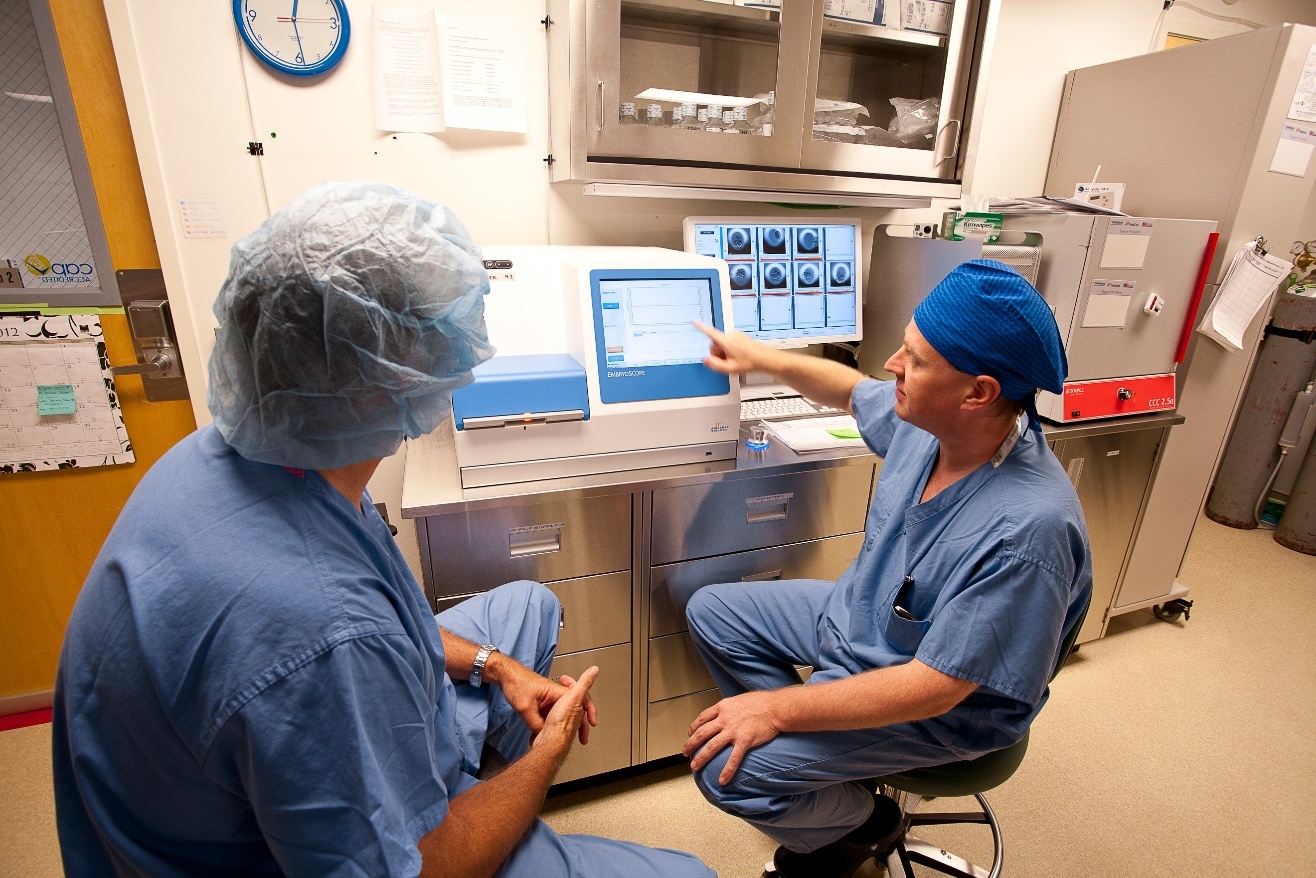
Infertility specialists and researchers are constantly looking for new ways to help patients realize their dream of a successful pregnancy. This drive for improvement has led to many new developments in the science of Assisted Reproductive Technologies and in the tools available to fertility clinics.
Every now and then there is a breakthrough which offers new hope. The EmbryoScope is a perfect example.This high-tech device is used in the IVF laboratory during the incubation period between fertilization and implantation.
The EmbryoScope allows infertility specialists to monitor the progress of fertilized embryos around the clock without removing them from the protected incubator. This gives doctors and patients insight into how the embryo is developing. For many patients, it has improved their chances of achieving a pregnancy.
How does it work?
After the egg retrieval procedure, the eggs and sperm (from the partner or donor) are mixed together in the IVF lab so that fertilization may occur. The embryos that are created need to be placed need to be placed in the protected environment of an incubator. The EmbryoScope is a special type of Time-lapse incubator which supplies the ideal environmental conditions for embryos to grow outside the body. With the EmbryoScope, the embryos stay in the incubator throughout the 5-7 day incubation period.
The Embryoscope takes pictures of the embryo every ~10 minutes. These images are then strung together into a small time lapse movie. This allows an embryologist to monitor the cell divisions and advancement of each embryo constantly while the embryo is still safe in the incubator.
Being able to watch the embryos grow without exposing them to conditions outside the incubator is a huge benefit, but it is only the beginning. Learning algorithms are constantly searching the data for patterns, and growing evidence suggests that there are certain key time points in development that are tied to positive or negative results.
This means that the EmbryoScope can help an embryologist predict a lot about the further development and pregnancy potential of each embryo. These crucial developmental changes can only be observed with the help of the EmbryoScope’s time lapse camera.
With the aid of this priceless information, the very best embryos can be selected by the Embryologists for transfer. Patients can achieve greater success, in a shorter time frame which can make all the difference.
How are embryos selected without the EmbryoScope?
In a routine IVF cycle, the fertilization process occurs in the same way, with retrieved eggs and sperm combined in a sterile dish filled with a special culture medium for growth. The embryos are cultured in a standard micro-incubator, which copies the conditions inside a woman’s body. In standard IVF, the embryos are removed from the incubator at set intervals to check on their development under a microscope.
These periodic observations allow embryologists to tell which embryos are most likely to do well when transferred back to the patient’s uterus, resulting in pregnancy.
As soon as the embryologist has completed each examination, the embryos must be returned to the incubator as quickly as possible to avoid any potential damage to the developing cells while they are out of the incubator.
What are the advantages of the EmbryoScope?
As we said before, the EmbryoScope is a sophisticated way to improve the embryo selection process. It can help experts identify potential valuable information about the embryo, the way it is developing, and its potential to survive transfer and implant, all while keeping the embryo in the best culture condition.
Keeping the embryo in this controlled and protected environment at all times helps to eliminate risks involved in moving and examining developing embryos but allowing all the potential for the selection of the best embryo for transfer.
Which patients will benefit from the use of the EmbryoScope?
Research has shown that while the EmbryoScope offers an improvement in results for all patients, the greatest improvement is among patients who repeatedly produce multiple abnormally developing embryos. As the only west-coast clinic with an EmbryoScope, SCRC is better able to serve patients.
Although the technology can be used for any and all types of patients to improve their time to pregnancy, its benefits are best seen when we prioritize the normally developing embryos over embryos that have done incorrect or abnormal developmental processes during incubation. Without the use of the EmbryoScope the embryologist is not able to know if an embryo has followed the normal path of development and has the highest chance to produce a pregnancy.
Your doctor will be able to advise you whether this is the right choice for your IVF cycle.







